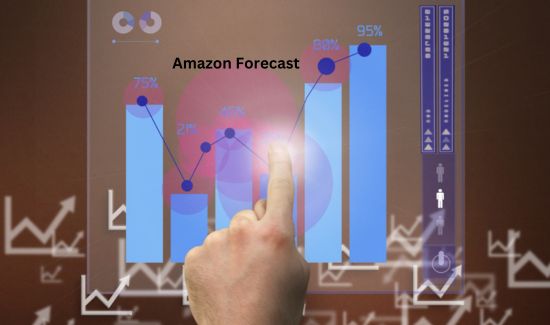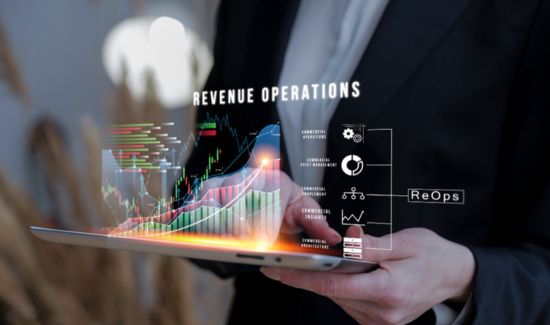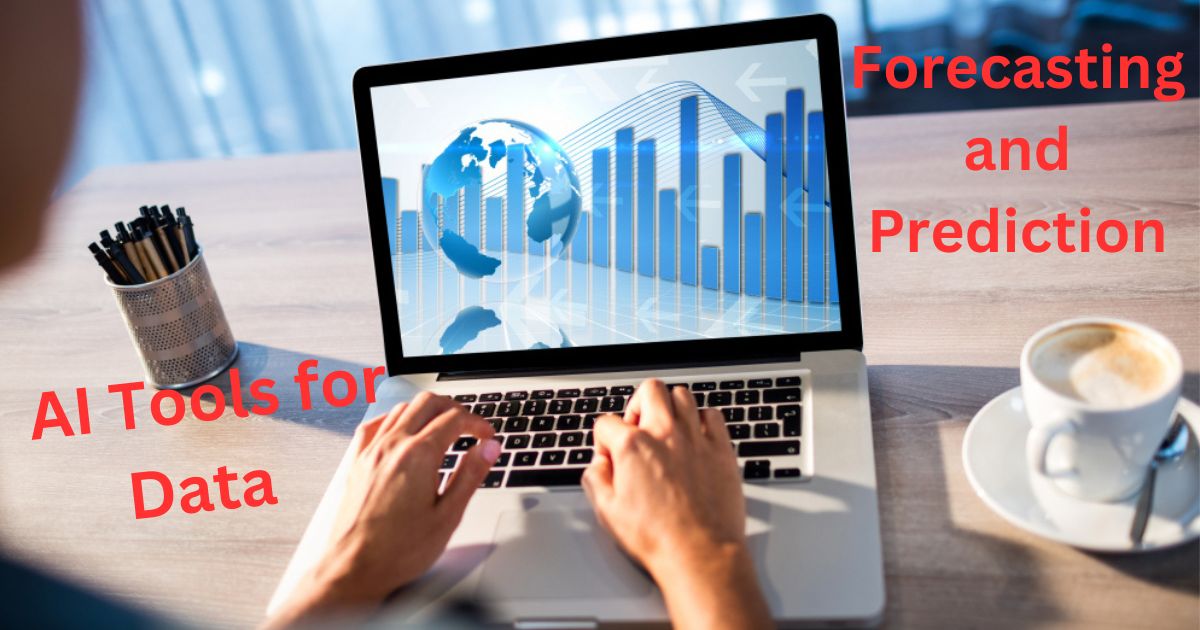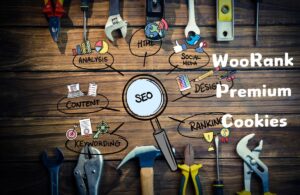The term “AI Data Forecasting and Prediction Tools” is a beacon of efficiency and accuracy in the world of data-driven decision-making. These technologies are the digital builders defining the future of forecasting, offering businesses unique insights into what lies ahead. In layman’s terms, they enable enterprises to navigate the uncertainties of tomorrow by leveraging artificial intelligence’s predictive ability.
Consider a world in which predicting is more than just a statistics exercise, but rather a dynamic process powered by cutting-edge technology. Today, we invite you to enter a world where conventional crystal balls have given way to algorithms and neural networks. With the introduction of AI, a new era of forecasting has begun, when precision meets speed and insights go beyond traditional limitations. So, if you’re ready to decipher the workings of AI tools that are altering data forecasting, strap in for a journey into the future of informed decision-making.
In the following sections, we’ll look at the “Top 15 AI Tools for Data Forecasting and Prediction.” These technologies, which range from industry giants like Amazon Forecast and Google Cloud AI Platform to advanced frameworks like TensorFlow and PyTorch, are the architects of data-driven foresight. Continue reading as we decipher the complexities, features, and real-world implications of these technologies, providing you with a road map to navigating the complex world of AI-powered data forecasting.
What is AI Data Forecasting and Prediction Tools
AI Data Forecasting and Prediction Tools are game changers in the fast-paced world of data analytics. These artificial intelligence-powered tools excel at identifying patterns and trends in massive datasets. Their primary purpose is to accurately forecast events to come, thereby enabling organizations to make educated decisions.
To examine historical data, data forecasting tools use powerful algorithms and machine learning models. They can detect complicated correlations between factors, allowing them to make exact forecasts about future trends. These tools save time and resources by automating this procedure, giving them a strategic advantage in the competitive field. As firms grasp the importance of data-driven decisions, AI technologies for data forecasting become essential for establishing a competitive advantage.
The Crucial Role of AI Data Forecasting Tools in Decision-Making
AI Data Forecasting Tools are essential aids in the complex web of decision-making. These tools are used by businesses to forecast sales, demand, financial trends, and other factors. AI-driven prediction insights enable CEOs to make strategic decisions, manage resources efficiently, and avoid risks. This dynamic predictive power applies to a wide range of businesses, from finance and e-commerce to healthcare and beyond.
The true strength of these technologies is their flexibility and scalability. AI tools excel at giving actionable information, whether estimating demand for a new launch or optimizing financial planning. As we look at the specific features and functionalities of the top 15 AI tools for data forecasting, you’ll have a better grasp of how they may revolutionize decision-making processes.
15 Best AI Tools for Data Forecasting and Prediction (Top Listed)
Here are the 15 top-listed Best AI Tools for data forecasting and prediction
Unveiling the Power of AI Data Forecasting Tools

Amazon Forecast
Amazon Forecast emerges as a predictive analytics powerhouse, effortlessly combining machine learning with adjustable forecasting models. This application makes accurate forecasting easier for organizations of all sizes by simplifying the process. The strength of Amazon Forecast is its capacity to handle a wide range of data sources, from time series to dynamic variables, allowing users to personalize predictions to their specific needs.
2. Exploring H2O AI Cloud for Advanced Data Forecasting
H2O AI Cloud
H2O AI Cloud stands out for its revolutionary features, which push data prediction to new heights. This platform enables teams to easily design, deploy, and manage models in a collaborative setting. Its user-friendly interface makes it a fantastic choice for businesses looking to harness the power of AI without requiring extensive technical knowledge. H2O AI Cloud’s capabilities extend beyond forecasting to include a wide range of machine learning tasks, ending in a holistic solution for data-driven decision-making.
3. Enhancing Accuracy with DataRobot
DataRobot
In the drive for precision, DataRobot emerges as a crucial actor in improving data predicting accuracy. DataRobot uses automated machine learning to streamline the modeling process, allowing enterprises to generate robust models quickly. Its user-friendly UI and automatic feature engineering make it suitable for users with little data science background. DataRobot’s dedication to transparency and understanding guarantees that forecasts made are not only accurate but also understandable, inspiring confidence in decision-makers.
4. Leveraging Sophistication with IBM Watson Studio

IBM Watson Studio
IBM Watson Studio elevates data predictions by providing a collaborative platform for data scientists and business analysts. The tool connects smoothly with multiple sources of data and enables the design of end-to-end workflows. IBM Watson Studio, which leverages machine learning and deep learning capabilities, enables users to develop models that capture subtle patterns in data, making it a go-to solution for enterprises seeking precision in their forecasting initiatives.
Insights into Google Cloud AI Platform
Google Cloud AI Platform
Google Cloud AI Platform provides essential insights, transforming the data forecasting landscape. This platform provides a complete set of tools for developing, training, and deploying machine learning models. The Google Cloud AI Platform facilitates model creation by providing scalable infrastructure and pre-trained models. Its integration with other Google Cloud services enables a unified platform for businesses looking to leverage the potential of AI in their forecasting projects.
6. Streamlining with RapidMiner
The Role of RapidMiner in Data Forecasting
RapidMiner is critical in speeding up data forecasting procedures by combining a user-friendly interface with significant features. This tool excels in data preparation, making feature engineering and selection more efficient. Its visual workflow architecture improves the modeling process and makes it accessible to data scientists as well as business analysts. RapidMiner’s speed in dealing with multiple datasets, as well as its support for numerous machine learning methods, make it a valuable asset for enterprises seeking agility and efficiency in their forecasting operations.
7. Harnessing Intelligence with SAP Analytics Cloud
SAP Analytics Cloud for Intelligent Predictions
SAP Analytics Cloud is establishing itself as a leader in intelligent data forecasting, offering a full analytics and forecasting solution. This program easily connects to a variety of data sources, allowing users to analyze, visualize, and predict patterns in real time. SAP Analytics Cloud’s strength is its ability to build interactive dashboards that enable decision-makers to actively examine and comprehend forecasts. With capabilities such as smart discovery and automated insights, SAP Analytics Cloud positions itself as a crucial tool for organizations seeking intelligent and data-driven decision-making.
8. Precision in Data Forecasting with Qlik Sense
Qlik Sense
Qlik Sense, a comprehensive analytics and visualization tool, is at the forefront of data forecasting precision. This program specializes in aggregating data from several sources, allowing users to create insightful dashboards that aid in trend forecasting. Qlik Sense’s associative data paradigm allows for dynamic exploration, allowing users to uncover hidden patterns and connections within their datasets. With its user-friendly interface and drag-and-drop functionality, Qlik Sense increases the precision of data forecasting and makes it accessible to users of all skill levels.
9. Robust Predictions with Microsoft Azure Machine Learning
Microsoft Azure Machine Learning
Microsoft Azure Machine Learning emerges as a veteran in the field of reliable predictions, providing a scalable and adaptable platform. From data preparation to model deployment, this platform streamlines the whole machine-learning lifecycle. Microsoft Azure Machine Learning leverages cloud-based infrastructure to provide the computational capacity required to handle huge datasets and complicated models. Its connectivity with other Azure services allows for a smooth workflow, making it an excellent alternative for enterprises looking for reliability and scalability in their data forecasting activities.
10. Impactful Data Forecasting and Visualization with Tableau

Tableau
The influence of Tableau on data forecasting goes beyond numbers; it is a visual journey into insights. This application excels at building visually appealing and interactive dashboards that improve understanding of projected patterns. The drag-and-drop interface of Tableau simplifies data visualization, allowing users to express complicated forecasting results clearly. Tableau’s robust visualization features transform data forecasting from a technical exercise into a visually captivating narrative, making it a crucial asset for organizations seeking to successfully communicate insights.
11. Accurate Predictions with Facebook’s Prophet
Prophet by Facebook
In the search for accurate forecasts, Facebook’s Prophet takes center stage, particularly in the context of time series forecasting. This program is specifically intended for forecasting activities, and it is both simple and efficient. Prophet’s additive model improves forecast accuracy by including components for seasonality, holidays, and trend shifts. Prophet by Facebook appears as a user-friendly yet powerful tool for enterprises seeking precise and dependable forecasts in their forecasting efforts, with an easy interface and automatic handling of missing data.
12. Scikit-learn’s Role in Machine Learning and Data Forecasting
Scikit-learn
Scikit-learn is an important tool for combining machine learning with data forecasting. This open-source library includes a variety of tools for categorization, regression, clustering, and other tasks. Its ease of use and simplicity make it a popular choice for applying machine learning algorithms in data forecasting models. The substantial documentation and community assistance provided by Scikit-learn contributes to its appeal, providing users with a resourceful environment for constructing machine learning solutions specific to their forecasting needs.
13. Exploring PyTorch’s Capabilities in Data Forecasting

PyTorch
PyTorch, famed for its flexibility and dynamic computing graph, also includes data forecasting capabilities. This deep learning system excels at constructing sophisticated neural networks that capture nuanced data patterns. The dynamic nature of PyTorch allows for iterative model construction, allowing users to alter models on the fly. With its expanding environment and GPU acceleration support, PyTorch is becoming a significant asset for enterprises looking to leverage deep learning for improved data forecasting accuracy.
14. Leveraging TensorFlow for Advanced Data Forecasting Models
TensorFlow
TensorFlow is a force to be reckoned with for enterprises looking to deploy powerful data forecasting models. This open-source machine learning framework excels at creating and training neural networks, laying the groundwork for complex forecasting tasks. TensorFlow’s scalability and distributed computing features enable users to handle enormous datasets and complex models with ease. As we explore deeper into TensorFlow’s capabilities, we gain a better understanding of how this framework contributes to the construction of cutting-edge data forecasting models.
15. Unveiling the Power of Automated Machine Learning (AutoML)
AutoML (Automated Machine Learning)
The attention is on AutoML, or Automated Machine Learning, as a disruptive force in data forecasting. This method simplifies machine learning by automating model selection, hyperparameter tuning, and feature engineering. AutoML platforms, such as Google’s AutoML, democratize machine learning by making it available to users of diverse skill levels. As we learn more about AutoML, it becomes clear how this automated technique revolutionizes data forecasting by providing efficiency and accuracy in user-friendly packaging.
Comparing AI Data Forecasting Tools vs Traditional Forecasting Methods

When comparing AI Data Forecasting Tools to traditional approaches, the benefits of AI become clear. Traditional forecasting is primarily reliant on previous data, making it difficult to adjust to dynamic and developing patterns. AI technologies, on the other hand, use advanced algorithms and machine learning models to identify complicated links within datasets and make more accurate predictions. AI’s adaptability to shifting data landscapes and capacity to manage big datasets give it a considerable advantage over traditional forecasting methods’ rigidity.
While traditional methods may involve manual data entry and analysis, AI tools automate these processes, saving time and reducing the risk of human error. The precision offered by AI in forecasting empowers organizations to make more informed decisions, which is crucial in today’s fast-paced business environment. As we delve into the nuances of comparing these approaches, the transformative potential of AI in revolutionizing forecasting practices becomes evident.
AI’s Impact on Finance and FP&A Tools
The introduction of AI in financial planning and analysis (FP&A) marks a paradigm change. The impact of AI on finance tools extends beyond automation; it ushers in a new era of intelligent decision-making. AI improves financial prediction accuracy by analyzing huge data sets, recognizing trends, and projecting future financial scenarios. The incorporation of AI in financial planning and analysis tools enables firms to shift from reactive to proactive financial strategies, reducing risks and capitalizing on emerging possibilities.
AI-powered finance solutions also automate routine tasks, allowing financial experts to concentrate on strategic analysis and decision-making. The ability of artificial intelligence (AI) to handle and analyze financial data quickly results in more timely and accurate financial insights. As we investigate the synergies between AI and finance tools, it becomes clear that this integration is more than just a technology update, but a fundamental shift in how financial choices are made and implemented.
Revolutionizing Demand Forecasting with AI & Machine Learning

With the introduction of AI and machine learning, the traditional landscape of demand forecasting undergoes a dramatic upheaval. Unlike traditional methods, which may struggle to respond to unexpected changes in customer behavior, artificial intelligence excels in capturing and analyzing real-time data. This capacity enables businesses to adapt quickly to changes in demand patterns, lowering excess inventory or preventing stock outs.
Integrating machine learning algorithms into demand forecasting processes allows them to learn from historical data and adapt to changing market dynamics. As a result, a more accurate and adaptable demand forecasting system that is compatible with the complexities of modern marketplaces is created.
Frequently Asked Questions
Which AI is best for forecasting?
The ideal AI for forecasting is chosen by the demands. Amazon Forecast, H2O AI Cloud, and Google Cloud AI Platform are popular options, with each excelling in different fields.
What AI technique is used to predict?
In artificial intelligence, machine learning techniques, particularly trained learning, are extensively utilized for prediction. Within this context, common approaches include regression, classification, and time series analysis.
Is AI used in forecasting?
Forecasting makes important use of AI. Machine learning is used in tools such as Amazon Forecast, H2O AI Cloud, and Google Cloud AI Platform to make accurate and efficient forecasts.
Can forecasting be automated?
Yes, forecasting can be automated using AI techniques such as AutoML. Automation simplifies the process, making it more efficient and accurate while also saving time and resources.
Is forecasting a tool?
No, forecasting is a process or methodology in and of itself. However, solutions such as AI-powered software, such as Amazon Forecast or H2O AI Cloud, help to facilitate and improve forecasting.
Conclusion
To summarize, the introduction of AI tools has caused a seismic upheaval in the data forecasting landscape. We’ve examined the features of Amazon Forecast, H2O AI Cloud, Qlik Sense, and other tools, emphasizing their critical roles in altering precision and efficiency. As an alternative to traditional forecasting approaches, these AI solutions emerge as beacons of flexibility and accuracy.
As we investigated the detrimental impact, it became clear that AI tools for data forecasting are more than just technology breakthroughs; they are strategic requirements. The contrast with traditional methods highlights AI’s advantage in dealing with dynamic datasets. AI integration signifies a fundamental shift toward more informed and proactive decision-making, from finance and FP&A tools to transforming demand forecasting. The future of efficient data forecasting is clearly in the hands of those who harness the power of AI, unlocking unprecedented potential for strategic insights and staying ahead in an ever-changing landscape.

Hey, I’m Akhtar Rasool a blogger from Lahore Pakistan who’s all about the marketing game. Reading and writing fuel my creative side, and I’ve found success in the blogosphere. Let’s connect through words and explore the exciting world where content meets strategy! 🌟








